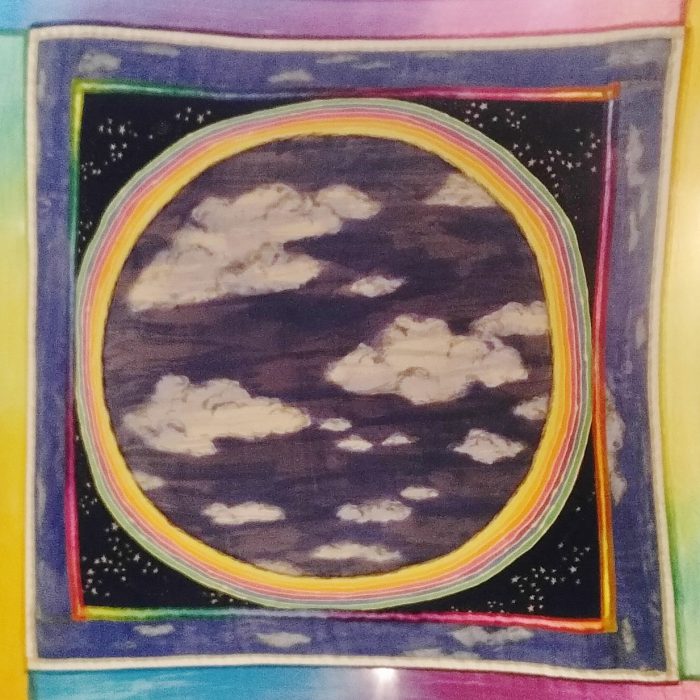Heaven and Earth: A Chuppah of Celebration (Wedding Canopy)
Corinne Soikin Strauss (b. New York 1946)
United States, 1990
Painted silk, h. 72 x w. 72 in.
Cincinnati Skirball Museum purchase with funds provided by friends of Sue and Jerry Teller in honor of Sue’s birthday, 9.73
The Jewish wedding ceremony takes place beneath the chuppah, or wedding canopy. The history of the chuppah dates to ancient times, when the term was applied to the bridal chamber. A symbol of the future home of the newly married couple, the canopy can be as simple as a tallit (prayer shawl) supported by four poles or as elaborate as a handwoven tapestry. Traditionally, the chuppah consists of a silk or satin embroidered roof supported by four poles fixed to the floor or held by relatives or friends of the bride and groom.
The bright colors of this hand-painted silk wedding canopy are expressive of the festive celebration that accompanies a wedding. The design reflects the artist’s interpretation of a biblical passage from Ezekiel, who likened God to a rainbow: “As the appearance of the bow that is in the cloud in the day of rain, so was the appearance of the brightness roundabout. That was the appearance of the likeness of the glory of the Lord” (1:28).
Corinne Soiken Strauss studied Fine Arts at New York’s Music and Art High School, Pratt Institute, and The Art Students League. This chuppah was honored with the Interfaith Forum on Religion, Art and Architecture’s Merit Award in 1991. Strauss was featured in ABC News in 1995 in a segment on wedding art.
Publications:
Artistic Expressions of Faith in Judaism, Christianity, and Islam, ed. Abby S. Schwartz, 1997, p. 12.

